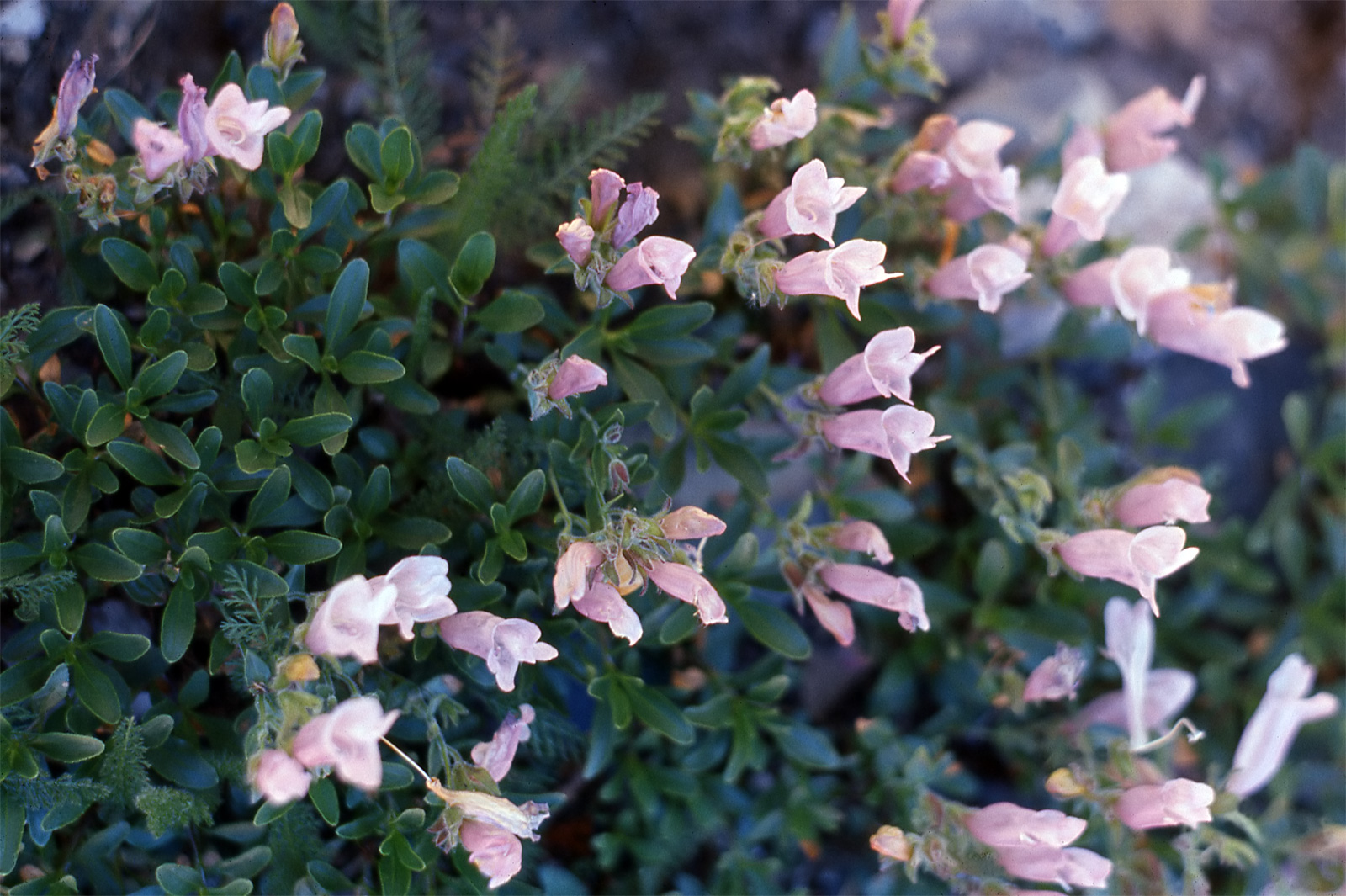Gallery containing public domain photos of flowers and plants from the Canadian National Parks – Western Canada. From the warm, temperate broadleaf forests of southern Ontario to the frigid Arctic plains of Northern Canada, from the wet temperate rainforests of the west coast to the arid deserts, badlands and tundra plains, the biodiversity of Canada’s plants is extensive.
Cassiope tetragona, also known as the white heather, is a plant native to the high Arctic and northern Norway, where it is found widely. Growing to 10–20 cm in height, it is a strongly-branched dwarf shrub. The leaves are grooved, evergreen, and scale-like in four rows. Pedicels are long and arched. The plant bears bell-shaped, solitary flowers usually with white and pink lobes and pink anthers.
Penstemon is a large genus of North American and East Asian flowering plants formerly placed in the Scrophulariaceae family. Due to new genetic research, it has now been placed in the vastly expanded family Plantaginaceae. Native Americans long used penstemon roots to relieve toothache. Although penstemons are among the most attractive native flowers of North America, Europe has always been far more active in their cultivation, and hundreds of hybrids have been developed there since the early 19th century.
They have opposite leaves, partly tube-shaped, and two-lipped flowers and seed capsules. The most distinctive feature of the genus is the prominent staminode, an infertile stamen.
Muscari is a genus of perennial bulbous plants native to Eurasia that produce spikes of dense, most commonly blue, urn-shaped flowers resembling bunches of grapes in the spring. The genus Muscari originated in the Old World, including the Mediterranean basin, central and southern Europe, northern Africa, western, central and south-western Asia. It has become naturalized elsewhere, including northern Europe and the United States.
Myosotis is a genus of flowering plants in the family Boraginaceae that are commonly called Forget-me-nots. There are approximately 50 species, with much variation. Most have small, flat, 5-lobed blue, pink or white flowers with yellow centers, growing on scorpioid cymes. They bloom in spring. They are widely distributed. Many Myosotis species are endemic to New Zealand, though it is likely that the genus originated in the Northern Hemisphere.
The gooseberry is a species of Ribes (which also includes the currants). It is native to Europe, northwestern Africa, west, south and southeast Asia. Gooseberry bushes produce an edible fruit. The easiest method of propagating gooseberries is by cuttings rather than raising from seed; cuttings planted in the autumn will take root quickly and can begin to bear fruit within a few years. Often used as an ingredient in desserts, such as pies, fools and crumbles. They are used to flavour beverages such as sodas, flavoured waters, or milk, and can be made into fruit wines and teas
Phlox is a genus of 67 species of perennial and annual plants in the family Polemoniaceae. They are found mostly in North America (one in Siberia) in diverse habitats from alpine tundra to open woodland and prairie. Some flower in spring, others in summer and fall. Flowers may be pale blue, violet, pink, bright red, or white. Many are fragrant.
The Peace rose, correctly Rosa ‘Madame A. Meilland’, is a well-known and successful garden rose. Over one hundred million plants had been sold, as of 1992. It is a Hybrid Tea rose with large flowers of a light yellow to cream color, slightly flushed at the petal edges with crimson-pink. It is hardy and vigorous and relatively resistant to disease, making it popular in gardens as well as in the floral trade. It was developed by French horticulturist Francis Meilland in the years 1935 to 1939.
